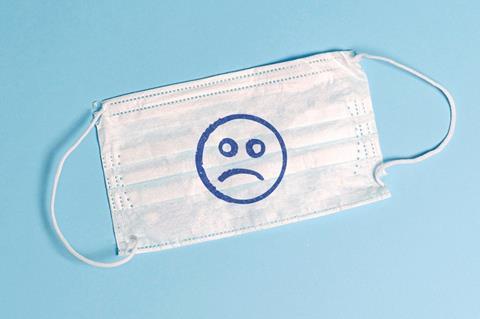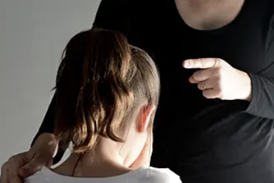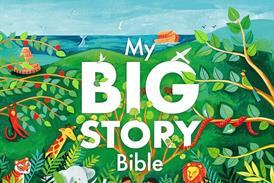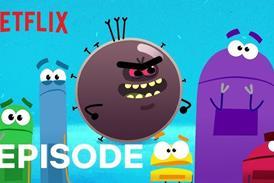As a mum and a teacher, Jo Rowe has been learning what to do when emotions get the better of her children
My son is in his final year at primary school. This has caught me by surprise! The school years all paused in my head in 2020 and in my brain, Tobias is still in Year 4! I’m not ready for him to be at Big School. This is the first full school year he has had without lockdown interruptions since Year 3. His age group has missed out the most, in terms of in-person schooling. It’s no wonder that across the country, teachers are reporting significant changes and challenges in Year-6 behaviour.
But it’s not just Year 6. Across all years we are seeing children struggling with big emotions, more meltdowns and more low-level disruption than ever before.
In talking to friends who are educational psychologists, social workers, teachers and youth workers, I have found a universal theme: children seem to be having meltdowns over the slightest thing and a lot of emotions are very loud and volatile. We are seeing more absences due to refusal rather than sickness, and children are falling further behind. The children who struggled before the pandemic are now even further behind. Lockdown has left a mark on our kids.
COVID-19 has posed a huge perceived threat in the past two years, causing the vast majority of us to become caught up in a fear response. This fear response causes us to operate out of the most primal part of our brain (our amygdala). This part of our brain is great for fleeing enemies, fighting threats or freezing to keep us safe, but it shuts down our ability to think rationally and logically.

Fight, flight or freeze
For our kids, the logical / rational part of their brain is still forming, so their ability to think beyond the threat is even more limited, meaning that many kids are stuck in the fight, flight or freeze part of their brain. Everything is perceived as a threat. Every challenge has the same response as a physical threat. That hard maths problem? Freeze. The simple task of lining up, or simply coming into school at all? Flight. The small arguments with friends that are a normal part of growing up? Level 10! DEFCON 1! Fight! Fight! Fight!
Some children, particularly those who had hard lockdowns with unsettled homes, are endlessly stuck in adrenaline cycles, they don’t know what they are feeling, they can’t make rational decisions and they are constantly getting themselves into trouble which is undermining their self-confidence and identity. They are acting out because they are constantly scared.
How can we help?
1. Look beyond the symptoms of the distress
We need to see through the shouting, the aggression or disruptive behaviour, to the pain and confusion. This isn’t always easy, especially when kids are throwing their whole arsenal of fight right at us! But if we can slow down and self-regulate in the moment, we might be able to help lower the adrenaline. We can help by validating pain and giving words for what they are feeling: “It looks to me like you are feeling very angry right now, that must feel quite frightening, is there anything I can do to help?”
2. Address the pain as a whole
This could be as a family, class or youth group. The more we talk and give language for the fear response, the more we can start to make our kids aware of how adrenaline amps up their reactions. We can start to share strategies to calm down and self-regulate in the moment: breathing exercises, becoming aware of senses, imagining safe places or prayer.
Often, children feel emotions in their bodies but can’t translate or name the emotion, in order that they might communicate their needs. Talking about how anger feels in our bodies, how sadness exhibits or loneliness manifests, can help give our kids access to their emotions. When they can name their feelings, they are halfway to processing them and getting the help they need. Discussing how different emotions feel, in a calm moment, gives language and solutions for future triggers.
3. Address the need to belong
Feeling safe, seen and known is a vital part of lowering adrenaline and allowing us access to logic and emotional intelligence. Youth games, class connections, family time all help to ground our kids. Creating team identity is powerful! Belonging is a fundamental core human need, something that incessant lockdowns robbed many of us of.
4. Examine our need to control
Often, when we are threatened by disrespect and bad behaviour, we want to tighten our control and make ourselves more rigid. However, tight, rigid rules and control are a fantastic trigger for the fear response! We can do this by looking at the places we can share control, creating places or times in our day where we can give over control. Practically this might look like choices in class, more role play and drama, creative time. For families it might look like planning activities together, allowing choices over meals and order of play. For youth groups it might look like planning an event together or a creative project. Obviously, we still need those boundaries and consequences but setting those out early, so everyone knows the boundary lines, can help lower your fear response too!
The pandemic has been declared a worldwide natural disaster. Studies have shown that there are two phases after the initial threat is over: the disillusionment phase and the reconstruction phase. People will move through those phases at different rates. The disillusionment phase – the bitterness, resentment, fear response, expectation of doom – can last for one month for some, but for others can last for more than two years. The reconstruction phase – the rebuilding of community, connection, belonging, safety and hope for the future – can take several years to complete.
As parents, educators and youth workers, we need to prepare ourselves for the long haul! These behavioural issues might not be resolved straight away but recognising the pain and confusion the fear response causes and equipping our kids with strategies, can move them through the disillusionment phase quicker. And we can start helping them to reconstruct their confidence, resilience and feeling of belonging all the sooner.












































